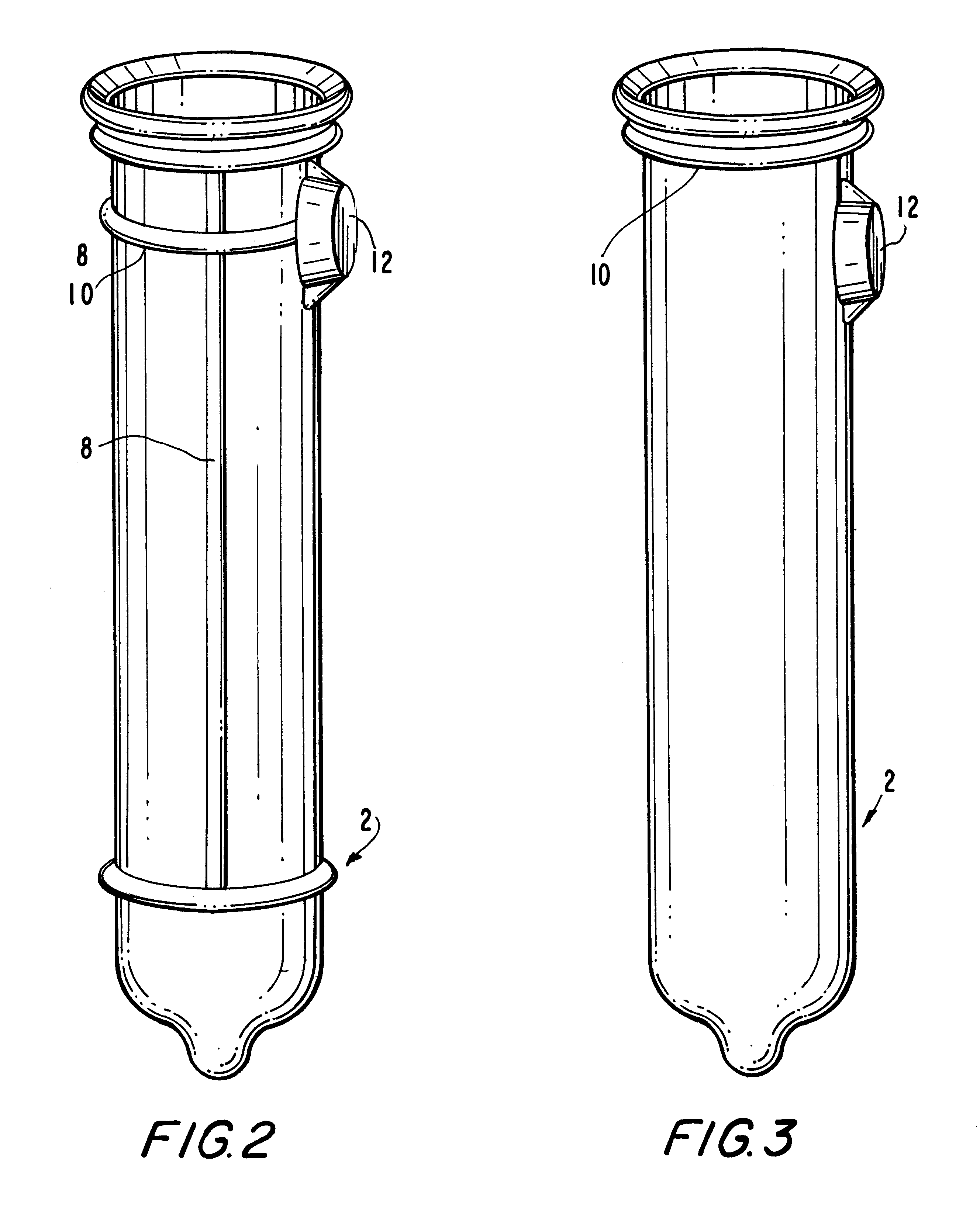Male, hermaphroditic, and female condoms exerting lateral pressure on the penis and the vagina
a technology of condoms and penis, applied in the field of condoms, can solve the problems of frustration of users, inefficiency of tasks, inconvenience and delay occasioned,
- Summary
- Abstract
- Description
- Claims
- Application Information
AI Technical Summary
Benefits of technology
Problems solved by technology
Method used
Image
Examples
second embodiment
the invention is shown in FIG. 2. The sole difference from the first embodiment is that, instead of a plurality of longitudinal microtubules 10 as shown in FIG. 1, only one longitudinal microtubule 8 is shown in FIG. 2. Such an arrangement of only one longitudinal microtubule 8 would be directed more toward stiffening the condom rather than exerting significant lateral and longitudinal pressure along the length of the user's penis.
FIG. 3 shows a third embodiment of the invention. The third embodiment differs from the first two embodiments in that only one circumferential microtubule 10 is present and no longitudinal microtubules 8 are present in contrast to the first two embodiments in which at least one longitudinal microtubule 8 is present and a plurality of circumferential microtubules 10 are present. The one circumferential microtubule 10 present is placed at the base of the condom so as to attain maximum safe tourniquet effect for only one microtubule since that microtubule wil...
fourth embodiment
FIG. 4 shows the invention. In contrast to the first three embodiments of the invention, the condom 5 is made from a conventional condom material, latex, and it contains no microtubules 6. An inflation compartment 12 is also present as in the previous three embodiments with an analogous purpose to inject air into the condom 4 by any of the means previously disclosed. However, instead of injecting air into microtubules 6, the air is injected into a toroidal chamber 16 within a hollow lip 18 at the open end of the condom 5. Upon air being injected into the toroidal chamber 16, the chamber exerts circumferential and lateral pressure like a tourniquet on the base of the user's penis in a manner fully analagous to that of the circumferential microtubules 10 located at the base 14 of the condom 2 in the first three embodiments of the invention. Similarly to the first three embodiments of the invention, at least a single one-way valve, seal, or other equivalent means are located in appropr...
fifth embodiment
the invention is shown in FIG. 5. It differs from the fourth embodiment of the invention in that a tube 20 leading directly to an air pump (not shown) or to the mouth of a user or other person is used to feed air directly into the toroidal chamber 16, instead of through an inflation compartment. This has the advantage of simplicity of construction since it eliminates the need for an inflation compartment 12, but this embodiment limits the mode of inflation to one which is based on a tube 20, whereas an inflation compartment, as in the fourth embodiment of the invention, can accommodate an air pellet as well.
PUM
 Login to View More
Login to View More Abstract
Description
Claims
Application Information
 Login to View More
Login to View More - R&D
- Intellectual Property
- Life Sciences
- Materials
- Tech Scout
- Unparalleled Data Quality
- Higher Quality Content
- 60% Fewer Hallucinations
Browse by: Latest US Patents, China's latest patents, Technical Efficacy Thesaurus, Application Domain, Technology Topic, Popular Technical Reports.
© 2025 PatSnap. All rights reserved.Legal|Privacy policy|Modern Slavery Act Transparency Statement|Sitemap|About US| Contact US: help@patsnap.com



